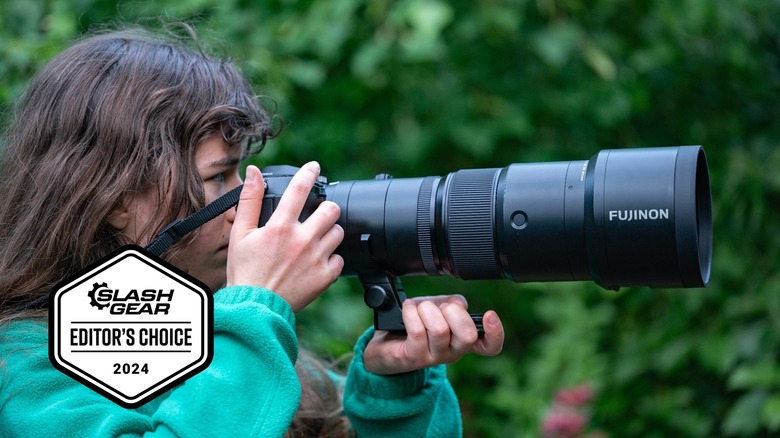
Andy Zahn/SlashGear
By Andy Zahn/
EDITORS’ RATING : 10 / 10
- Superb Image Quality
- Rugged, water resistant construction
- Remarkably effective image stabilization
- Reasonably priced
- Tripod foot features integrated Arca-Swiss compatibility
- Effective focal length is closer to 400mm
Medium format photography does not typically lend itself to extremely long focal lengths, but the Fujifilm Fujinon GF 500mm f/5.6 R LM OIS WR in conjunction with Fujifilm’s latest generation of medium format cameras challenges the preconceived notions of such cameras in an audacious manner. Where before the longest lens photographers using Fujifilm’s GFX system could make use of was the GF 250mm f/4 R LM OIS WR, the GF 500mm f/5.6 doubles that focal range and makes wildlife or sports photography feasible for a system which previously was far from ideal for capturing such subjects.
However, it’s important to note that a 500mm f/5.6 lens is not really the same effective focal length as if you were shooting with this lens on a full frame sensor camera. Due to the larger medium format sensor, it’s necessary to multiply the focal length and aperture by 0.79 to find that the effective focal length and depth of field of this lens is actually 395mm f/4.424. That puts it very close to Nikon’s recent Nikkor Z 400mm f/4.5 VR S lens in practical application, though it’s important to note that the f4.424 effective aperture only applies to depth of field and not to light gathering capabilities.
The upshot is that Fujifilm has made what appears to be a truly groundbreaking lens, though it’s necessary to see if it lives up to expectations when put to the test in the field.
Fujifilm provided a sample of the Fujifilm Fujinon GF 500mm f/5.6 R LM OIS WR Lens for this review.
Beautiful from edge to edge
There’s no faulting the Fujinon GF 500mm when it comes to optical performance, and keep in mind that this lens has to cover a far larger sensor area than a full frame lens, Even when shooting wide open at 5.6 I was pleasantly surprised to find great edge-to-edge sharpness and a lack of significant optical flaws.



Five ED and two Super ED elements create a potent formula for countering the classic boogeymen of color fringing, distortion, and vignetting. In none of my photos captured with this lens did I find the need to apply extra corrections to account for optical imperfections. It delivers a ton of detail so that even shooting on the 102 megapixel Fujifilm GFX 100S ii, I was able to take full advantage of that enormous pixel-dense sensor. Because of this, you can expect to be able to do some serious cropping after snapping the shutter while still rendering fine detail.


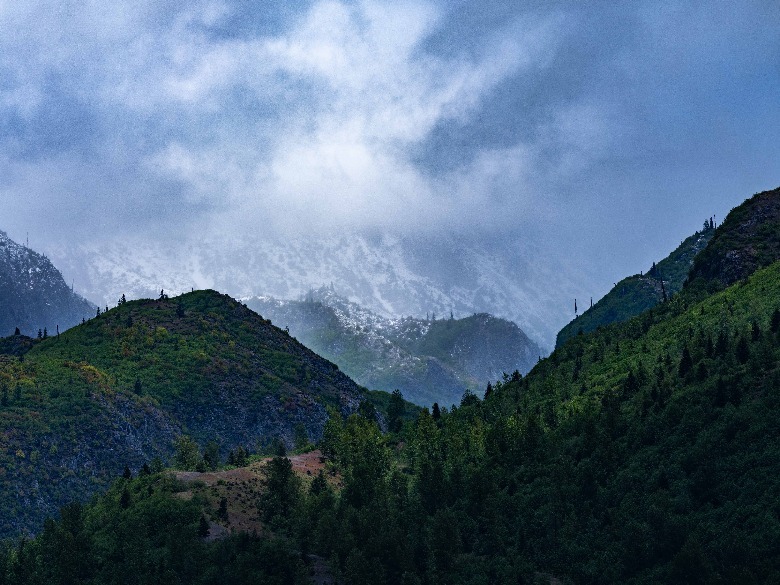
A full 2X crop of your images will leave you with 51 megapixels worth of resolution, which is at the upper end of what full frame mirrorless cameras will deliver. In this way, you could almost look at the Fujinon 500mm f/5.6 as something like a 400mm to 800mm zoom when shot using one of Fujifilm’s 102MP cameras. In practice it’s a bit more complex than that, but there’s definitely an advantage to shooting on a super high resolution sensor with an ultra sharp lens and having the freedom to reframe your shot comfortably after the fact.
Rugged and weather resistant
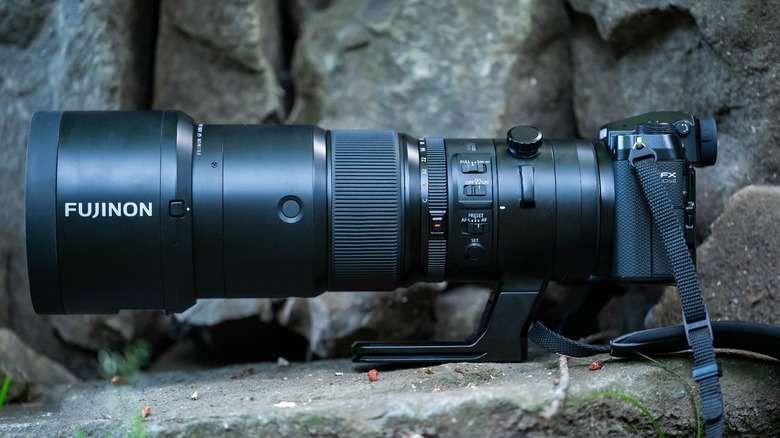
Andy Zahn/SlashGear
At 9.4-inches long and just 3.03lbs, the Fujinon 500mm f/5.6 is quite portable, and is both ergonomic to use and tough enough to put up with some fairly wild conditions. It’s weather resistant, a fact I put to the test during particularly stormy June weather. I had it out snapping shots in the mist and light rain without ill effect.
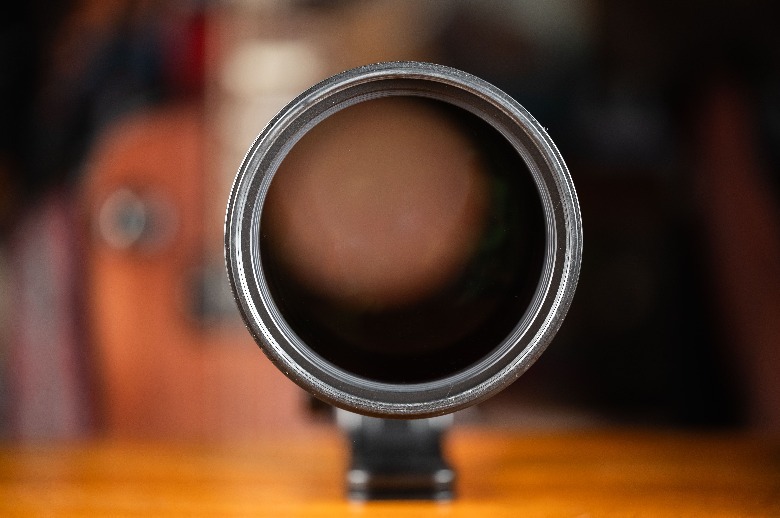
For controls, there’s quite a wide range on the lens itself. It has customizable buttons, autofocus controls, a focus limiter, and stabilization selector switch, plus a manual aperture ring. The included lens hood is decent, with a window underneath so that variable filters may be easily adjusted, and I particularly appreciated the tripod foot with its integrated Arca-Swiss compatible grooves. This means you don’t need to attach an extra tripod plate, and it’s a feature I believe should be included on all lenses with tripod feet.
impressively effective image stabilization
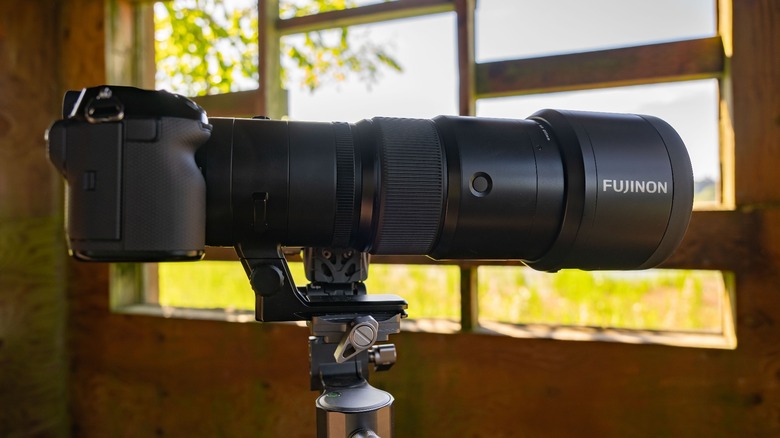
Andy Zahn/SlashGear
Combined with the internal image stabilization system of the Fujifilm GFX 100S ii, the Fujinon 500mm f/5.6’s optical stabilization system delivered extremely good performance. I was able to capture sharp handheld images reliably at 1/40 shutter speed, and its impact on video footage was particularly good. Other systems I’ve used have perhaps been technically more effective, but when it comes to video the natural flow of stabilized footage shot with this lens/camera combination is particularly pleasing to me.



The story is also good with autofocus, as I rarely struggled to grab focus where I wanted it with this lens and camera. The GFX 100S ii was able to use its suite of powerful, intelligent subject detection to its full capability, and the lens focuses quietly for a system which must move around such large glass elements. There were times where it struggled to pick out birds in dense brush, but that’s more a limitation of the subject detection algorithm in the camera than any fault of the lens.
Attractive price tag
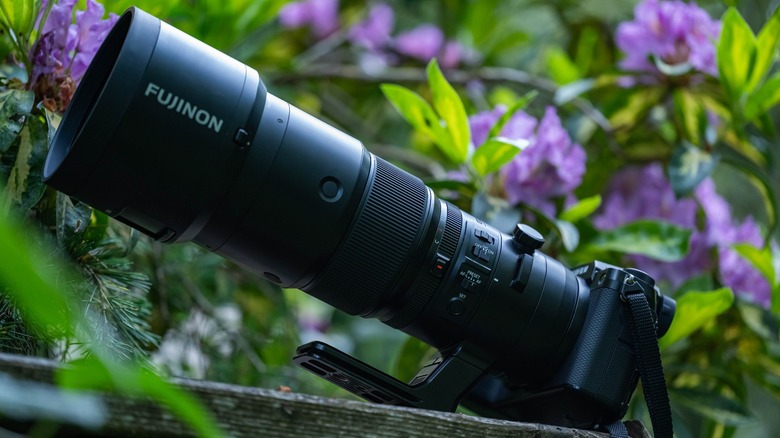
Andy Zahn/SlashGear
While $3,499 is certainly a lot of money to the average individual, it’s only a few hundred more than Nikon’s Nikkor Z 400mm f/4.5 VR S. When you consider that the Fujinon 500mm f/5.6 has to do a lot more heavy lifting to perform as it does on a medium format camera, that similarity of MSRP is surprising. Also consider that this lens is practically unique, which makes the relatively affordable price tag all the more unusual.
It’s worth taking a moment to consider some of your other options with camera/lens systems capable of similar results. A Fujifilm GFX 100S ii will set you back $4,999 on its own, which is significantly more than a Nikon Z8 which currently retails for around $3500. You could pick a Z8 and a 400mm f/4.5 up for quite a bit less than a GFX 100S ii and Fujinon 500mm f/5.6. Alternatively, the Sigma 500mm f/5.6 DG DN OS Sports Lens costs just $2,999, while a 61 megapixel Sigma FP L camera is only $2,499, making for a highly attractive budget-oriented option.
However, the Nikon option lacks the flexibility of a sensor with twice its pixel count, and the Sigma is not as robust when it comes to modern features, and isn’t as ergonomic. While I certainly love my Z8 and Z9 cameras, particularly in combination with my Nikkor Z 800mm f/6.3 VR S lens, the versatility of the GFX 100S ii and Fujinon 500mm f/5.6 offers distinct advantages over any full frame system, despite the caveats.
Conclusion
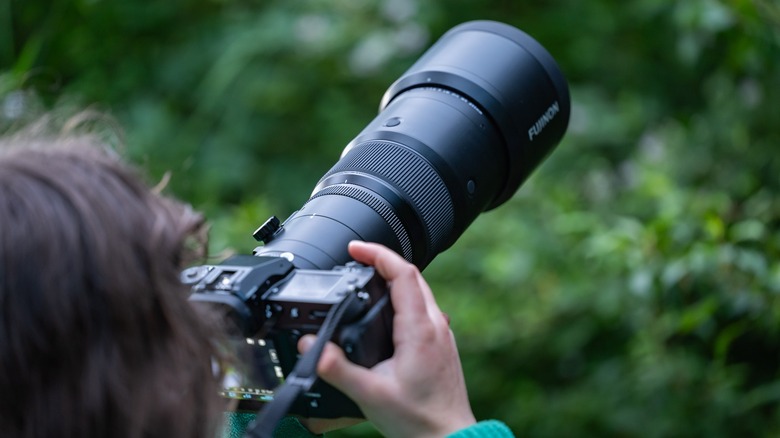
Andy Zahn/SlashGear
If you’re already using a Fujifilm GFX system camera and have been wanting to add a really long lens to your kit, then the Fujinon GF 500mm f/5.6 R LM OIS WR is a truly exciting optic. For those who’ve been considering switching to medium format, the Fujinon 500mm f/5.6 goes a long way towards making Fujifilm’s GFX system more appealing to the average photographers who are looking for a well-rounded camera system in which they can expand to capture different genres by acquiring specialized lenses.
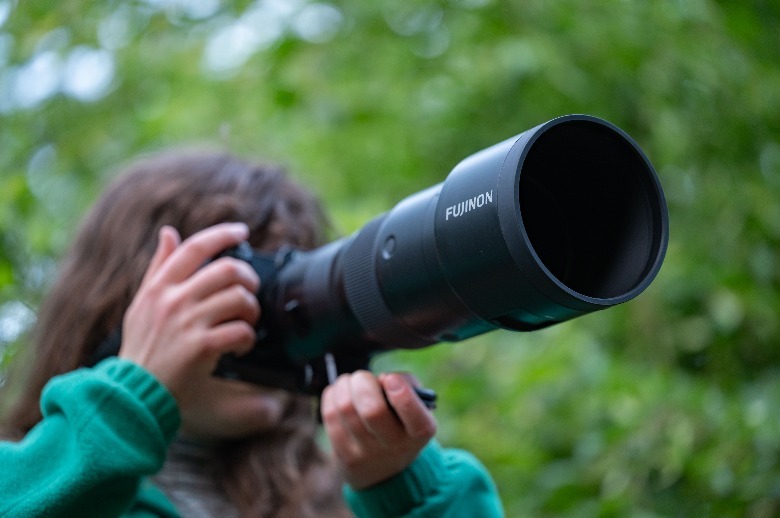
Between a high level of optical performance, impressive optical stabilization, and a weather sealed design that features some really smart touches such as an integrated Arca-Swiss foot, there’s a lot to love about this lens. If you want even more reach you can also spring for Fujifilm’s teleconverter, or just take advantage of the gloriously flexible, crop-friendly nature of high resolution images captured on a medium format sensor. With a reasonable price tag to round off an already extremely attractive lens, the Fujinon GF 500mm f/5.6 R LM OIS WR is easy indeed to recommend.
The Fujifilm Fujinon GF 500mm f/5.6 R LM OIS WR will be released to the public soon through retailers like B&H Photo for an expected price of $3,499.